How to Engage an Uninterested Student with Tips & Strategies
Teaching is a rewarding profession, but it can also be incredibly challenging, especially when faced with reluctant learners. Many educators, particularly secondary teachers with decades of experience or those who are new to the profession, encounter students who show a lack of motivation. The key to overcoming this challenge lies in understanding and implementing strategies that enhance students’ engagement. Here are some practical tips to help you engage reluctant students and create a positive learning environment if you’re wondering how to engage an uninterested student.
Building Trust
We know we should be building relationships with our students, but that looks different than we think (and in the real world, not theoretically, it’s done differently than we perceive as well). Personal connections and successful, meaningful relationships go a long way in fostering student interest and intrinsic motivation. But the kicker is that so many have turned the phrase “build a relationship” into a catch-all. Of course, as teachers, we try to build relationships with our students. However, the ways our current students are finding connections are not only different, but those who are pushing relationship building are not explaining how to do it effectively.
It’s not about building a traditional relationship, but about building trust. When a student acts out or is defiant, it is because they are leaning on themselves and their peers to meet their emotional needs that aren’t being met elsewhere. Over time, our students have learned to not trust anyone who hasn’t earned it. In my data on the student apathy crisis, it becomes extra apparent that we have an entire generation in front of us that only gives respect when it’s mutual and they are very weary of what they are told by authority because they are quite literally watching the world around them struggle in every possible way.
If you haven’t read that article on how we got here, I highly suggest doing so.
Once you understand the root of all of it, spend a little bit of time each day getting to know your students on a level that works. Learn about their interests, hobbies, and prior knowledge. This approach not only helps in understanding their needs but also in tailoring your teaching style to suit them better.
Creating a Positive Learning Environment
A positive learning environment is crucial for engaging reluctant students. Start your class period with a warm-up activity that grabs students’ attention. This could be a quick attendance question, a fun fact, a short discussion about a recent event, or a YouTube video relevant to the subject matter. Engaging students right at the start sets a positive tone for the entire thing.
On a regular basis, providing opportunities for students to practice new skills and receive feedback helps in tracking student progress. While there are no magic bullets for instant engagement, consistent efforts in building a positive classroom environment, recognizing student achievements, and maintaining high energy levels throughout the whole time can make a significant difference. As the bell rings at the end of the day, students should leave feeling that their time was well-spent, having learned something new, and feeling more connected to their peers and teachers.
These routines not only help in managing the class but also in building a sense of community and readiness for learning. Additionally, incorporate morning routines that establish a sense of predictability and comfort. Simple strategies such as greeting students at the door, sharing a daily schedule, or incorporating a new vocabulary word of the day can create a welcoming atmosphere.
Group Work and Collaborative Learning
Group work is an excellent way to boost student engagement. Collaborative work helps students learn from each other and keeps them involved. Organize small groups to discuss class topics, complete tasks, or solve problems together. This method not only promotes learning but also helps in building a sense of belonging among students. For quiet students, small groups provide a safer space to express their ideas compared to speaking in front of the whole class.
Group work and collaboration are among the best ways to engage reluctant learners and foster a sense of community in the classroom. One of the most important things in implementing group work is to ensure that students have a common goal, which encourages them to work together effectively.
According to recent research, collaborative activities help build relationships and promote a sense of belonging among students, which is particularly beneficial for belonging-driven kids. For secondary teachers, especially English teachers, incorporating group work at the start of a lesson can set a positive tone and increase energy levels.
For instance, in the United States, high school students who regularly participate in group activities tend to complete work more efficiently and with higher engagement. Former students often recall these collaborative experiences as highlights of their school years. Group work allows for a mix of talkative students and quieter ones to contribute in their own ways, fostering a balanced classroom dynamic. For new teachers, developing student engagement strategies that include collaboration can lead to a better chance of success in their own classrooms.
Monitoring body language and real-time interactions during group work helps teachers gauge student involvement and adjust as needed. While it might seem that group activities take much time, the benefits of increased student participation and the development of social and academic skills are well worth it. Ensuring a respectful and inclusive environment, aligned with the school’s privacy policy, is crucial for maintaining a safe space where all students feel comfortable.
Incorporating real-world tasks in group work provides practical learning experiences that are engaging and meaningful, making collaboration a good way to prepare students for future challenges.
Utilizing Modern Technology
Incorporating modern technology into your lessons can significantly increase student engagement. Tools like educational technology platforms, social media, and video games can make learning more interactive and enjoyable. An online classroom setup can also offer different ways to learn, catering to diverse learning styles. This approach is particularly effective for English language learners who might benefit from visual and interactive content.
The most important thing is to integrate technology in a manner that enhances the learning experience and builds relationships between students and teachers. Technology can effectively use students’ time by providing interactive and personalized learning opportunities. The good news is that many tools and platforms are available that cater to diverse learning needs, from educational apps to online collaboration tools.
There are so many examples of the benefits of this. For secondary teachers, incorporating technology can transform their teaching methods. English teachers, for example, can use digital storytelling tools or online discussion forums to make literature more engaging. Technology can particularly benefit belonging-driven kids by offering platforms where they can express themselves and collaborate with peers.
When used on a daily basis, integrating technology helps maintain high energy levels in the classroom as students interact with real-time data and multimedia resources.
Even in a single day, the use of technology can make a noticeable difference. Tools like educational apps, interactive whiteboards, and virtual labs provide real-world experiences that traditional methods might lack. Monitoring student progress in real-time allows teachers to provide immediate feedback, enhancing the learning process. Additionally, using technology can help manage classroom logistics efficiently; for instance, teachers can send reminders or updates via phone number or email, ensuring that everyone stays informed and connected.
Incorporating modern technology is not just about using the latest gadgets; it’s about creating an engaging, inclusive, and efficient learning environment that prepares students for the future. By leveraging these tools, teachers can enrich their teaching practices and help students develop the skills they need to thrive in an increasingly digital world.
For some ideas, check out my EdTech Tools series, which is constantly growing.
Setting High Expectations and Providing Regular Feedback
Setting high expectations and providing regular feedback are best practices for encouraging reluctant students. Challenge students with high expectations and give them regular feedback on their progress. Use feedback forms to understand their needs better and adjust your teaching methods accordingly. Regular feedback helps students stay on track and motivates them to improve their academic performance.
Additionally, combining high expectations with positive reinforcement can significantly boost students’ confidence and motivation. Recognizing small achievements and providing constructive feedback not only helps students understand their progress but also fosters a growth mindset. This approach encourages students to take ownership of their learning and strive for continuous improvement. Creating a culture where mistakes are seen as opportunities to learn rather than failures can transform reluctant learners into engaged and proactive students.
Engaging Class Discussions
Class discussions are a great way to involve all students in the learning process. Pose great questions that stimulate thinking and allow students to share their opinions. This not only keeps students engaged but also helps in developing critical thinking skills. Ensure that discussions are inclusive and that every student gets a chance to participate.
Incorporating a variety of discussion formats, such as think-pair-share or small group discussions, can also ensure that quieter students feel comfortable contributing. By varying the structure, you can cater to different communication styles and preferences, making the discussions more dynamic and inclusive.
Another effective strategy is to connect class discussions to real-world issues and students’ personal experiences. This makes the discussions more relevant and meaningful, thereby increasing student interest and engagement. Encourage students to bring in news articles, personal stories, or examples from social media that relate to the lesson topic.
This not only enriches the discussion but also helps students see the practical application of what they are learning. Additionally, setting clear expectations for respectful communication and active listening can create a safe and supportive environment where all students feel valued and heard. This approach not only enhances the quality of the discussions but also helps in building a strong classroom community.
Practical Applications and Real-World Connections
Connecting the subject matter to real-world applications can spark students’ interest. Show them how the topics they are learning apply in real life. For instance, use examples from video games or social media to explain concepts. This approach makes learning more relevant and interesting for students.
Another effective way to bring real-world applications into the classroom is through project-based learning. Assign projects that require students to solve real-life problems or conduct research on current events. This not only helps students understand the practical relevance of their studies but also develops their problem-solving and critical-thinking skills. Field trips, guest speakers, and virtual tours can also provide immersive learning experiences that make academic content come alive.
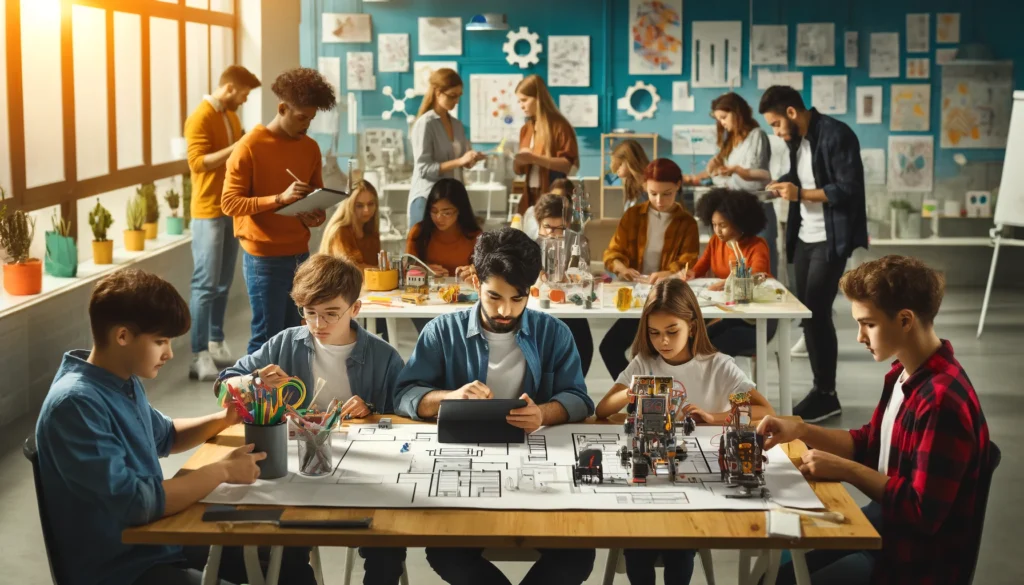
Additionally, integrating career-oriented activities can further enhance the connection between classroom learning and real-world applications. Invite professionals from various fields to discuss how they use the concepts students are learning in their daily work. This can provide valuable insights and inspiration, helping students see the potential future applications of their knowledge.
Encouraging students to explore different career paths through internships, job shadowing, or simulations can also provide a practical context for their studies. By consistently tying academic content to real-world applications, teachers can foster a deeper understanding and appreciation for the subject matter, ultimately leading to higher engagement and motivation.
Addressing Mental Health and Well-Being
Pay attention to the mental health and well-being of your students. Burned-out teachers and students both need a supportive environment. Encourage positive interactions and be mindful of negative comments. Create a classroom culture where students feel safe and respected. This positive impact can enhance students’ engagement and overall well-being.
Pay attention to the mental health and well-being of your students. Burned-out teachers and students both need a supportive environment. Encourage positive interactions and be mindful of negative comments. Create a classroom culture where students feel safe and respected. This positive impact can enhance students’ engagement and overall well-being. Implementing social-emotional learning (SEL) activities can be a powerful tool in this regard.
Regularly incorporating activities that focus on self-awareness, self-management, social awareness, relationship skills, and responsible decision-making helps students develop essential life skills. Additionally, providing resources such as counseling services, wellness programs, and stress management workshops can support students’ mental health needs.
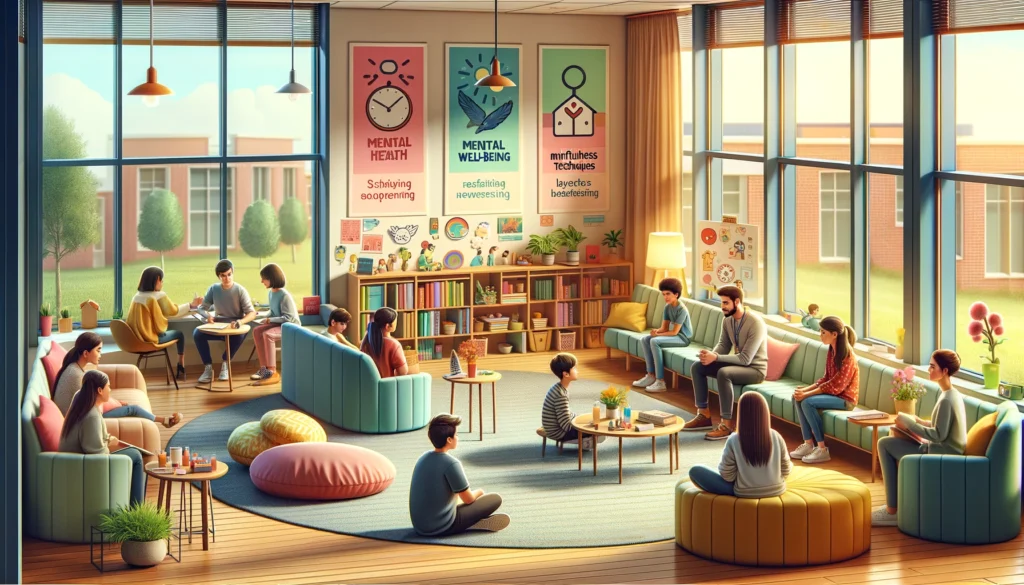
It is also important to recognize and address signs of stress and anxiety in students. Be observant of changes in behavior, academic performance, or social interactions that might indicate a student is struggling. Establishing open lines of communication and creating a non-judgmental space where students feel comfortable discussing their concerns can make a significant difference.
Encourage students to practice self-care and maintain a healthy balance between their academic responsibilities and personal lives. By prioritizing mental health and well-being, teachers can create an environment where students are not only academically successful but also emotionally resilient and ready to face challenges both inside and outside the classroom.
Adapting Teaching Strategies
Adapt your teaching strategies to meet the needs of your students. Use a mix of direct instruction, group work, and hands-on activities. Be flexible and try different options to see what works best for your students. This adaptability shows that you care about their learning and are willing to put in the hard work to help them succeed.
Additionally, incorporating differentiated instruction can be particularly effective in addressing the diverse learning styles and abilities within your classroom. Tailor your lessons by offering varied resources, assignments, and assessments that cater to the individual strengths and weaknesses of your students. This personalized approach not only helps in meeting students where they are but also ensures that each student is challenged appropriately and can experience success.
Incorporating technology can also play a significant role in adapting teaching strategies. Utilize educational apps, online resources, and interactive tools to create a more engaging and personalized learning experience. For example, online quizzes and games can provide instant feedback, helping students understand concepts better and allowing you to adjust your teaching methods in real time.

Blended learning, which combines traditional classroom methods with digital learning opportunities, can offer students greater flexibility and control over their learning pace. By continuously seeking out and implementing innovative teaching strategies, you demonstrate a commitment to your student’s growth and a willingness to evolve as an educator to meet their changing needs.
Encouraging Intrinsic Motivation
Finally, encourage intrinsic motivation by setting clear learning goals and showing students the value of what they are learning. When students see the purpose behind their studies and how it benefits them, they are more likely to be motivated and engaged.
In conclusion, engaging reluctant students requires a combination of strong relationships, a positive learning environment, effective use of technology, high expectations, and practical applications. By implementing these strategies, classroom educators can create a more engaging and supportive learning environment that caters to the diverse needs of their students. Remember, even small changes can make a big difference in students’ engagement and academic success.
Stop Driving the Teacher Struggle Bus
Are you struggling with student engagement, apathy, or keeping your class on track?
💫💫 There’s hope! 💫💫
If you’re ready to take the first step towards reviving student engagement and transforming your classroom, I invite you to join me for my free workshop “Reversing Student Apathy” designed to equip educators with innovative strategies that work.
This free teacher workshop offers educators a valuable opportunity to explore and address student apathy. By examining its causes and discussing strategies, participants will learn how to make meaningful changes in their teaching methods that are actually working. The sessions are engaging and collaborative, allowing educators to share experiences and develop a collective approach to improving student engagement.
Highlights include:
- Understanding the roots of student apathy and its impact.
- Strategies for enhancing classroom dynamics.
- The importance of educator-student relationships.
- Innovative teaching approaches for today’s students.
By the end of the workshop, you will not only understand what you need to accomplish to stabilize the 4 pillars of your classroom, but you will also walk away with 5 tangible ideas to try in the classroom the very next day.
Join today to be part of the solution to reigniting student enthusiasm and engagement.
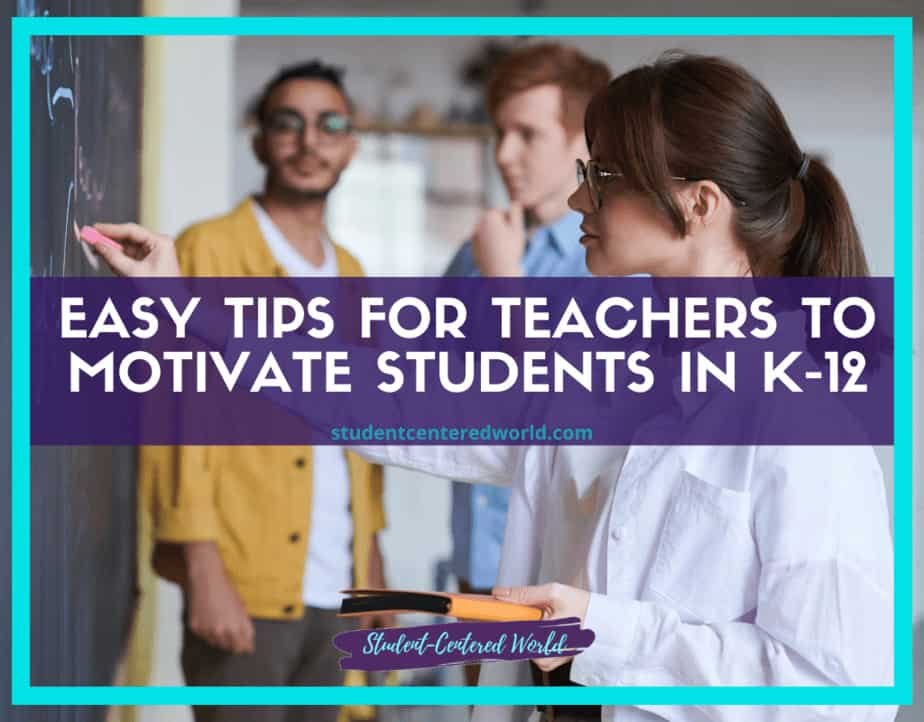





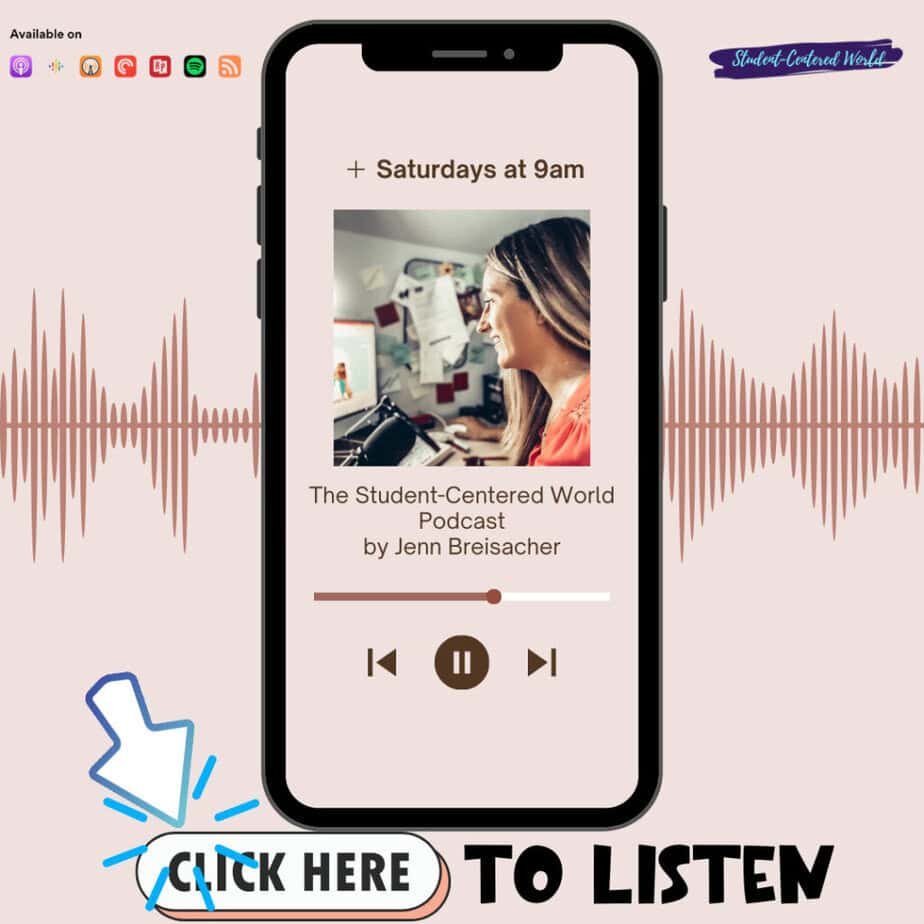
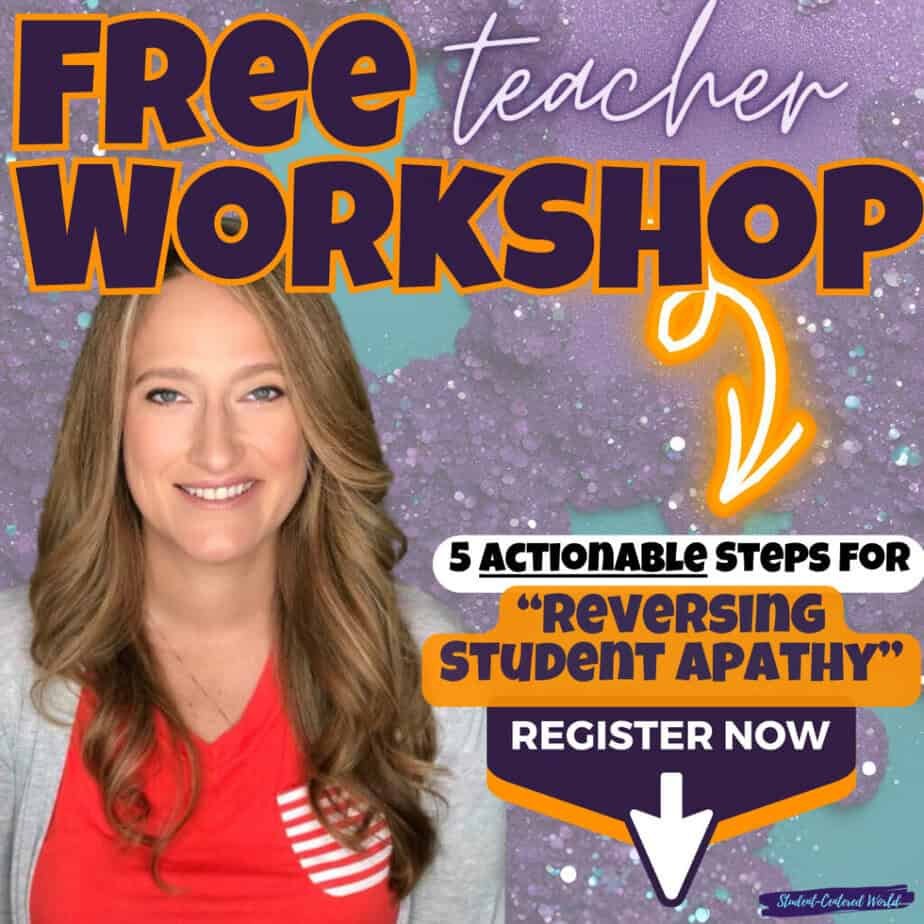



One Comment
Margaret Finnegan
Great insight. I would love to have my whole school look into this and already reached out to my principal and forwarded two of your articles.
Side note Google blocked the sign in as I was signing up. It could be my school network/organization. I’ll check it out tomorrow.
Thanks for sharing all of your hard work,
Ms.Finnegan